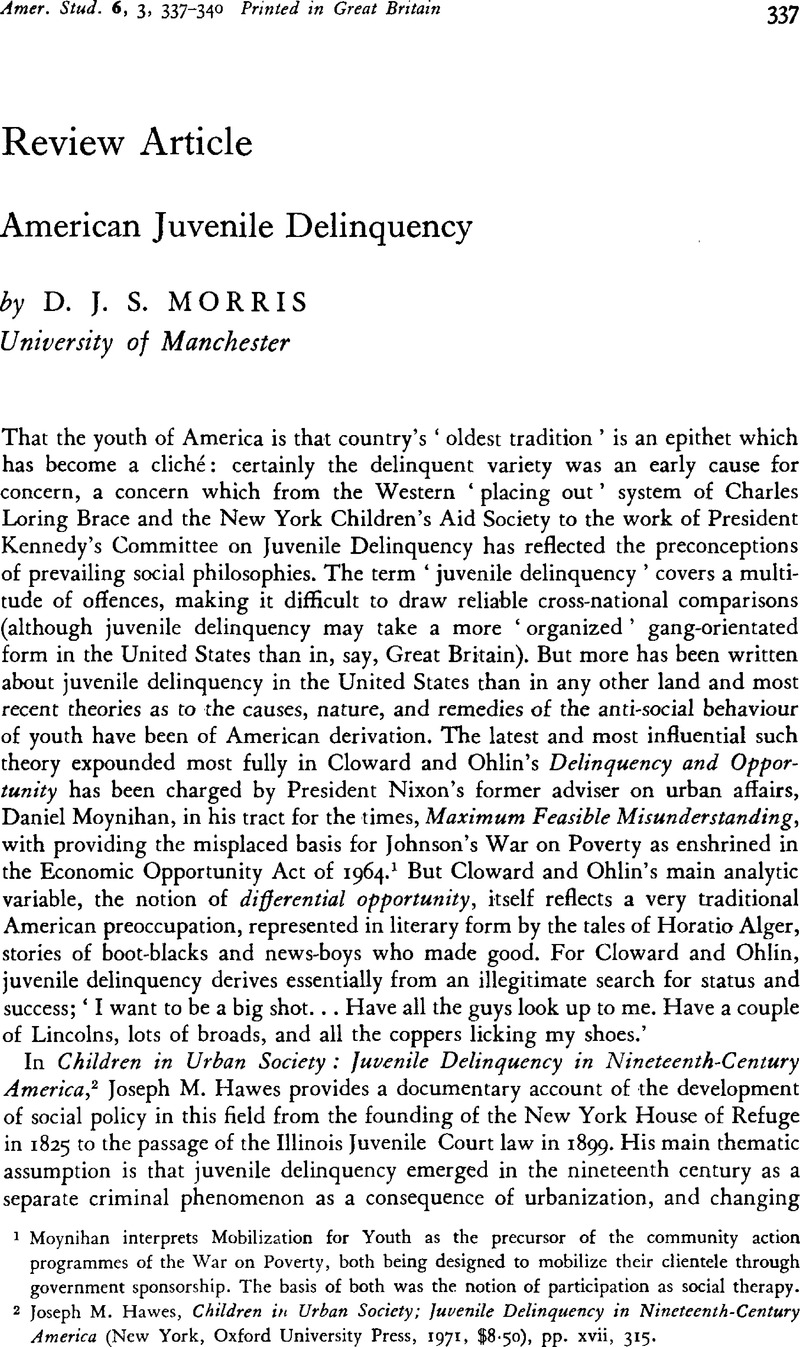No CrossRef data available.
Article contents
American Juvenile Delinquency
Published online by Cambridge University Press: 16 January 2009
Abstract

- Type
- Review Articles
- Information
- Copyright
- Copyright © Cambridge University Press 1972
References
1 Moynihan interprets Mobilization for Youth as the precursor of the community action programmes of the War on Poverty, both being designed to mobilize their clientele through government sponsorship. The basis of both was the notion of participation as social therapy.
2 Hawes, Joseph M., Children in Urban Society; Juvenile Delinquency in Nineteenth-Century America (New York, Oxford University Press, 1971, $8.50), pp. xvii, 315.Google Scholar
3 Although Rousseau is usually credited with having invented adolescence, it has been claimed to be ‘on the whole an American discovery’. David Bakan argues that after the Civil War ‘three major social movements developed, all of which conspired to make a social fact out of adolescence: compulsory (characteristically public) education, child labor legislation, and special legal procedures for “juveniles”’. See article ‘Adolescence in America: from idea to social fact’, Daedalus, 100 (Fall, 1971), 979–95.Google Scholar
4 See Katz, Michael B., The Irony of Early School Reform; Educational Innovation in Mid-Nineteenth Century Massachusetts (Cambridge, Mass., 1968Google Scholar; paperback 1970), part 3, ‘Compulsory Education and the Urban Delinquent: The State Reform School’, pp. 163–211.Google Scholar
5 The standard ‘ecological’ accounts of the causes of delinquency, stressing the ‘disorganized’ features of slum life, are Thrasher, Frederic M., The Gang (Chicago, 1927)Google Scholar, and Shaw, Clifford R. and McKay, Henry D., Juvenile Delinquency and Urban Areas (Chicago, 1942).Google Scholar
6 Platt, Anthony M., The Child Savers: The Invention of Delinquency (Chicago and London, Chicago University Press, 1969, $8.50), pp. ix, 230.Google Scholar
7 American Journal of Sociology, 49 (September 1943), 165–80.Google Scholar


